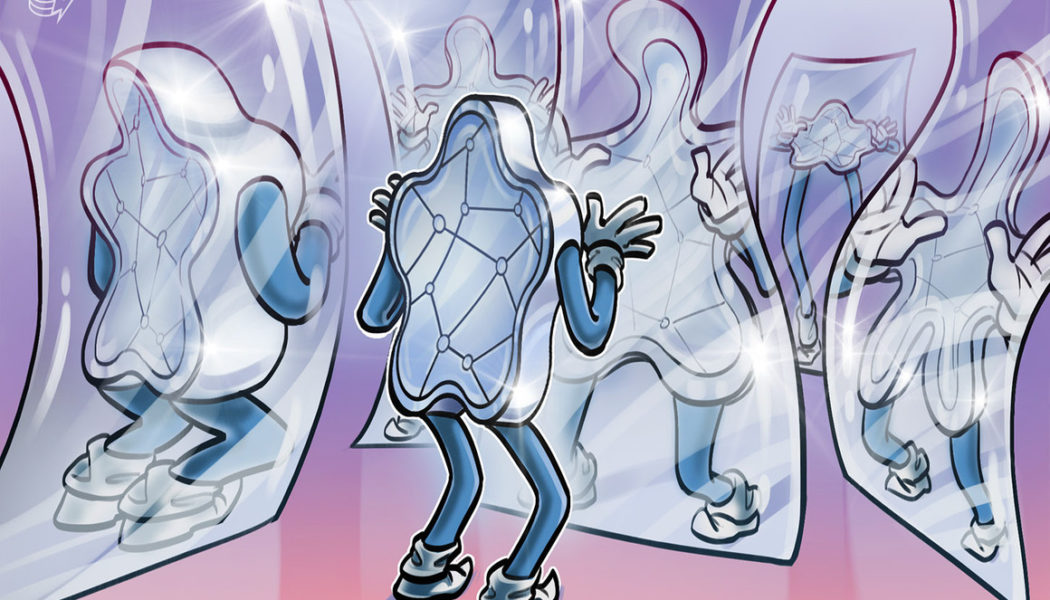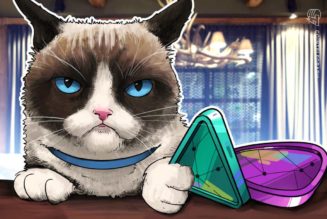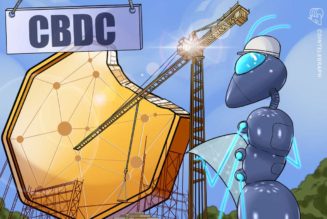
With cryptocurrency prices wavering this year, nonfungible tokens (NFTs) and other sub-ecosystem investors have also found themselves in the grips of a bear market.
However, looking beyond the trading value of Ether (ETH), NFTs were primarily created to represent assets and ownership in the real and virtual world. The bear market, as a result, has reignited discussions around how NFTs can backtrack and focus on attending to use cases while the market recovers.
In a conversation with Cointelegraph, Tony Ling, the co-founder of analytics platform NFTGo, shared insights into the NFT ecosystem, revealing the expected trajectory of the ecosystem.
Cointelegraph: NFTs’ rise to mainstream popularity is often attributed to the various real-world use cases it can and has solved. What is your take on the falling NFT market? Do you think the market is set to recover?
Tony Ling: Answering this question requires explaining the value base of NFTs first. Currently, the NFT market is mainly driven by four categories: art, PFP (profile pictures), land and membership. At the moment, PFP is the most dominant. The value base of PFP NFTs mainly includes three parts: financial products, collectibles/luxury goods and memberships, among which the financial products are currently dominant, whereas the derivatives model of NFTs is still in the very early stage. Therefore, with the overall de-bubbling of the crypto market, NFTs, as a low liquidity derivative of fungible tokens (FT), are bound to fall accordingly. This is to be expected.
However, I believe that as the crypto market picks up in 2023–2024, the value of NFTs has room to grow several times that of the larger Crypto market. Its value growth will come from at least two aspects:
One, with the development of NFTs and meta-universe-related technology, NFT use scenarios will be more abundant, and the consumption property of NFTs will grow, and this consumption property is not only to solve real-world problems but also to create new scenarios that do not exist in the real world.
For example, all assets in Otherdeed’s metaverse are NFTs, and these NFTs themselves will generate various economic interaction scenarios, thus realizing new consumption to help people better fulfill their needs and even develop into new productivity tools and business forms.
Two, the development of various NFT derivatives, including NFT fragmentation, NFTFI, NFT mortgage lending, and NFT fixed income products. These new financial products will enable investors to participate in NFT-related investments in a more flexible format, thus attracting more capital, both institutional and individual investors, to this market.
CT: Despite the losses and reduced hype, many projects are still considered viable investments. What do you think is driving this trend? How important is it for NFTs to serve use cases, or is it just investors looking to make a quick buck?
TL: The driving force of any trend is both the “story created by the speculator” and the “real value.” Especially in the early days of an industry, a bubble is more of a reaction to uncertainty, and I believe that it’s primarily builders like us who embrace the uncertainty that is driving the trend. Of course, in addition to builders, large funds, including funds in the crypto space, mega funds and even funds that used to focus on traditional areas are also very important drivers. Indeed, some of them want to make a quick buck, but from the perspective of capital efficiency, I don’t think right now is a good time to make a quick buck in the crypto market.
CT: What trends are still relevant from the early NFT days, irrespective of price fluctuations? And what are new trends you believe will get popular in the coming future?
TL: First of all, more and more people are paying attention to NFTs and there are bound to be orders of magnitude more in the future. Data from NFTGo shows that there are currently over 2.96 million wallets on Ethereum that hold an NFT, compared to just over 200,000 in August 2020. Despite the current market sentiment being cold, there are still 20-30,000 addresses trading NFTs every day. Of course, this figure still has tremendous room for growth. Secondly, builders are continuing to build. You can see that many NFT-related companies have recently acquired financing. Furthermore, although the market has recently been bearish, there are still successful new projects like goblintown and Memeland emerging in the market.
Recent: Boom and bust: How are Defi protocols handling the bear market?
Although the various PFP projects in the last NFT summer had their own unique characteristics, many were still following the paradigm set forth by the Bored Ape Yacht Club (BAYC). With the further development of the NFT industry, a new mega-trend is bound to emerge. This new trend, I guess, will be the outbreak of the content ecology of the metaverse. The definition of “content” here is broad, and games in the Metaverse can also be defined as “content.” As mentioned earlier, the enhanced consumer attributes of NFTs will help the industry recover, and the consumer attributes mean that NFTs will generate non-investment income cash flow for their holders. One important way to do this is to build “content” in the Metaverse and let the builders own the content and generate revenue. The enjoyers of the content receive intrinsic rewards and are seemingly happy to pay for them.
CT: What is your take on current investor sentiment? How do you think it affects the overall NFT market? What can NFT projects and companies do to improve engagement?
TL: The NFT market sentiment is cold for two main reasons: One, the price of Ether is in a volatile period and a large number of investors are in a wait-and-see phase; two, the PFP narrative and growth pattern are nearing their end, and the recent emergence of projects has not yet brought a new pattern, thus making it difficult to bring new expectations to the market.
The crypto industry is cyclical in nature. I personally recommend that you continue to explore new directions in the industry while keeping enough capital to wait for the next cycle of the crypto industry and seize the opportunity.
CT: As you’ve mentioned, the scope of the NFT market is only limited to the imagination of entrepreneurs. What are some of the use cases that NFTs can and should serve as it beaches further into the mainstream?
TL: In this regard, I want to point out three major subsets of use cases where NFTs are well-positioned for causing mainstream disruption.
New Art form: Digitization allows for richer forms of artistic expression, and the emergence of NFT and related eco-products solves the problem of digital art ownership and better helps art creators to make a profit. As the digital world merges with the real world, the penetration of digital art in human society will become more and more widespread, thus becoming a huge new market for collectibles as well as luxury consumer goods.
Recent: Crypto for foreign trade: What do we know about Iran’s new strategy
PFP, self-expression and new forms of organization: I think one of the main reasons for the popularity of PFP projects is that they better meet the human need for self-expression. The ability to tell others “who I am” is an important human spiritual need, and the PFP NFT projects and related ecologies create a good way to meet this need. The PFP NFT projects and their extended community has not only given users a medium for self-expression but also made it easier for people to form communities with others who share similar expressions. Likewise, as the community evolves, these similar people may create new forms of organizations, such as decentralized autonomous organizations (DAOs), to influence society outside of their niche community.
New “public-blockchain-like” carrier: Current land-based projects, such as Otherdeed, Sandbox and Decentraland, may evolve into something similar to public blockchains in the future. New NFT projects, games, and applications may all operate within the ecosystems of these land-based projects.
 [flexi-common-toolbar] [flexi-form class=”flexi_form_style” title=”Submit to Flexi” name=”my_form” ajax=”true”][flexi-form-tag type=”post_title” class=”fl-input” title=”Title” value=”” required=”true”][flexi-form-tag type=”category” title=”Select category”][flexi-form-tag type=”tag” title=”Insert tag”][flexi-form-tag type=”article” class=”fl-textarea” title=”Description” ][flexi-form-tag type=”file” title=”Select file” required=”true”][flexi-form-tag type=”submit” name=”submit” value=”Submit Now”] [/flexi-form]
[flexi-common-toolbar] [flexi-form class=”flexi_form_style” title=”Submit to Flexi” name=”my_form” ajax=”true”][flexi-form-tag type=”post_title” class=”fl-input” title=”Title” value=”” required=”true”][flexi-form-tag type=”category” title=”Select category”][flexi-form-tag type=”tag” title=”Insert tag”][flexi-form-tag type=”article” class=”fl-textarea” title=”Description” ][flexi-form-tag type=”file” title=”Select file” required=”true”][flexi-form-tag type=”submit” name=”submit” value=”Submit Now”] [/flexi-form]










Tagged: crypto blog, Crypto news, Cryptocurrency Investment, investments, Tokens, Trading